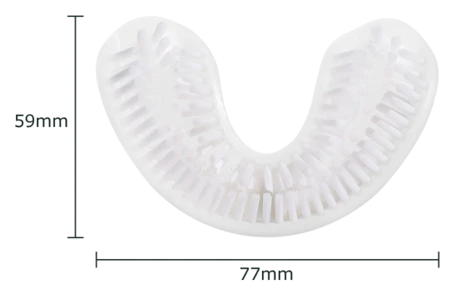
Keeping Your Breath Fresh While Wearing Braces
Written in collaboration with Dr. Satish Pai
Braces prove effective in orthodontic care, enhancing your smile's charm. However, they occasionally trigger unpleasant breath. It's a dilemma many brace wearers confront.
Are you grappling with brace-induced bad breath too? When faced with this issue, effective solutions are sought. This article delves into some of the most potent methods to counteract unpleasant breath while wearing braces.
Therefore, if you're eager to bid farewell to foul odors and embrace fresh breath, let's delve into the details!
What Causes Bad Breath During Orthodontic Treatment?
While braces are worn, food particles tend to accumulate more frequently between teeth and braces. These trapped particles become fertile grounds for oral bacteria, leading to unwelcome odors.
Additionally, the brackets and wires of braces can amass plaque and bacteria, worsening issues with bad breath.
To maintain fresh breath throughout your braces treatment, adopt a few simple adjustments to your oral hygiene routine. Details are provided in the following section!
How to Prevent Bad Breath with Braces – 8 Effective Strategies
By following these eight straightforward yet powerful tips, you can ensure your breath stays fresh and your braces gleam throughout your orthodontic journey!
1. Consistent Dental Care
The significance of regular brushing and flossing cannot be emphasized enough. After each meal and before bedtime, utilize a gentle-bristled toothbrush for thorough teeth cleaning. Focus on cleaning around the brackets and wires of your braces. Consider incorporating an interdental brush for more effective cleaning with braces. Also, employ floss threaders specially designed for braces.
2. Use of Antibacterial Mouth Rinse
Alongside brushing and flossing, integrate an antimicrobial mouthwash into your daily oral hygiene regimen. Rinse your mouth with it post brushing and flossing to eradicate bacteria and invigorate your breath. However, avoid using any ordinary mouth rinse; select an alcohol-free formula tailored to combat the causes of bad breath during brace wear.
3. Ensure Adequate Hydration
It's important to stay well-hydrated throughout the day for your overall health. Drinking sufficient water helps prevent bad breath by rinsing away food particles and bacteria from your mouth. A clean mouth lowers the likelihood of having unpleasant breath. Therefore, keep a water bottle within reach (preferably avoiding very cold water) and ensure you stay hydrated!
4. Apply Orthodontic
Wax Another effective measure to prevent bad breath with braces is applying orthodontic wax. This wax creates a smooth surface, preventing brackets and wires from causing irritation inside your mouth.
Reducing inflammation can minimize the risk of bad breath caused by mouth sores or injuries. Enhanced comfort with braces also facilitates consistent oral hygiene practices.
5. Reduce Sugar Consumption
Bacteria thrive on sugar! Consumption of sugary foods leads to acid production by oral bacteria, potentially causing tooth decay and bad breath. Limit your intake of sugary foods and beverages while wearing braces.
Opt for healthier alternatives such as fruits, vegetables, and whole grains. These choices promote oral health and help prevent bad breath associated with braces.
6. Avoid Strong-smelling Foods
We've all encountered the lingering smell of garlic or onions on someone's breath—it's certainly not pleasant. Strong-smelling foods like garlic, onions, and spicy dishes can leave lasting odors in your mouth.
While avoiding these foods entirely may be challenging, try to minimize consumption. If you do indulge, ensure thorough brushing and rinsing afterward.
7. Use Breath Fresheners
A temporary yet effective solution to combat bad breath while wearing braces is to use breath fresheners. Breath mints can help alleviate bad breath and offer a refreshing burst for several hours. Keep sugar-free breath mints nearby and use them as needed.
Remember, breath fresheners should complement—not replace—basic oral hygiene practices. They can be a useful addition to your routine.
8. Schedule Regular Dental Visits
Ensure to schedule regular dental visits, which are essential, especially when undergoing braces treatment. Your dentist needs to monitor your treatment progress and overall oral health consistently. These visits are crucial for receiving guidance on how to maintain fresh breath while wearing braces. Don't underestimate the importance of these vital dental appointments!
In Conclusion
Maintaining excellent dental hygiene is key to preventing bad breath with braces. By following the practical tips outlined above, you can enjoy fresh breath and avoid awkward moments.
Effective methods to combat bad breath with braces include maintaining consistent oral care, avoiding specific foods, and utilizing additional tools like orthodontic wax and mouth rinses.
Remember, wearing braces doesn't mean you have to endure bad breath. With proper attention to dental health, you can smile and converse confidently.
Stick to your dental hygiene routine and embrace your braces experience with fresh, pleasant breath!










